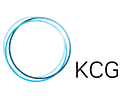Scalping vs. Swing Trading: Which Forex Strategy Suits You?
Forex trading offers a variety of strategies to suit different trader profiles, but two of the most popular and contrasting approaches are scalping and swing trading. Both offer unique opportunities and challenges, but which one fits your trading style?
In this guide, we’ll break down the key differences between scalping and swing trading, helping you make an informed choice that aligns with your goals and risk tolerance.

What Is Scalping?
Scalping is a high-frequency trading strategy where traders make numerous small trades throughout the day, aiming to profit from minor price movements.
Key Features of Scalping:
- Trade Frequency: High (dozens to hundreds of trades per day)
- Time Frame: Seconds to minutes
- Profit Target: Small gains per trade (5-10 pips)
- Risk Level: High due to frequent exposure to market volatility
Example: A scalper might buy EUR/USD and aim for a 5-pip gain before quickly exiting the trade.
Pros of Scalping:
- Quick profits with minimal market exposure
- Multiple trading opportunities daily
- Less impact from macroeconomic events
Cons of Scalping:
- Requires intense focus and time
- High transaction costs if spreads and commissions aren’t low
- Emotionally demanding
What Is Swing Trading?
Swing trading involves holding positions for several days or even weeks, aiming to capture larger price movements.
Key Features of Swing Trading:
- Trade Frequency: Low to moderate (a few trades per week)
- Time Frame: Hours to weeks
- Profit Target: Larger gains per trade (50-200 pips)
- Risk Level: Moderate, with exposure to overnight risks
Example: A swing trader might short GBP/USD after spotting a bearish pattern and hold the position for a week.
Pros of Swing Trading:
- Less time-intensive than scalping
- Potential for larger profits per trade
- Easier to integrate with a full-time job
Cons of Swing Trading:
- Exposure to overnight and weekend risks
- Requires strong technical and fundamental analysis
- May tie up capital for longer periods
How to Choose the Right Strategy for You
Here are a few questions to help you decide:
- How much time can you dedicate to trading?
- Full-time availability? Scalping might suit you.
- Limited time? Swing trading offers more flexibility.
- What’s your risk tolerance?
- Comfortable with fast-paced decisions? Try scalping.
- Prefer a more relaxed approach? Swing trading could be ideal.
- What’s your trading personality?
- Love adrenaline and quick wins? Scalping is your game.
- Enjoy in-depth analysis and strategic planning. Swing trading fits better.
Why Trade with FXCG?
No matter which strategy you choose, FXCG offers the tools and resources you need to succeed:
- Raw spreads for cost-effective trading
- Low commissions for high-frequency traders
- MetaTrader 4 platform for seamless execution
- Forex demo accounts to practice your strategy risk-free
Start trading with FXCG today and find the strategy that suits you best.
Final Thoughts
Whether you’re drawn to the rapid pace of scalping or the calculated moves of swing trading, understanding the nuances of each strategy is key to long-term success. FXCG’s lowest-cost platform supports both approaches, helping you trade smarter and more efficiently.
Choose your path, stick to your plan, and trade with confidence.
before: How to Trade Major Currency Pairs
next: Forex Trading: Build a Winning Plan, Step-by-Step Guide for Success


















